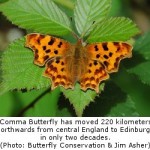
Nairobi – In just over two months, representatives from world governments will be winging their way to the Rio+20 conference in Brazil to map out the future path of sustainable development.
Supporting ecosystem services (the benefits people gain from healthy ecosystems) is a key part of the transition to a low-carbon, resource efficient Green Economy, which in the context of sustainable development, is one of Rio+20’s major themes.
One winged, nocturnal resident of Mexico with strong Brazilian roots is demonstrating just that – and boosting the US cotton industry by hundreds of thousands of dollars in the process.
In summer months, the Brazilian free-tailed bat migrates from its habitat in central Mexico to breeding grounds in the north of the country and south western areas of the United States, where it feeds on moths and other agricultural pests.
A study published in the journal ‘Frontiers in Ecology and the Environment’ estimates that this natural pest control has an economic value of US $ 740,000. The study takes into account the value of cotton crops that would have been lost in the absence of these Brazilian bats and cost savings made through the reduced use of pesticides.
During the UN-backed Year of the Bat 2011-12, the UNEP Convention on the Conservation of Migratory Species of Wild Animals (UNEP/CMS), emphasizes the value of ecological services bats provide to human economies and the health of ecosystems.
“Bats perform an essential role as an agent of natural pest control by generating economic, social and environmental benefits in a Green Economy,” said CMS Acting Executive Secretary Elizabeth Maruma Mrema.
Migratory species including bats can provide biological solutions to increase economic gains while reducing harm to the environment.
Rio+20 provides the opportunity for countries to enhance efforts towards restoring and boosting the health of ecosystems globally in order to deliver growth, generate employment and maintain services such as water supplies to the health of agricultural systems.
Brazilian bats (Tadarida brasiliensis) can form huge summer breeding colonies, which can reach 10 million animals. The total population of the colonies in the region can surpass 100 million Brazilian bats in each season.
By consuming the adult moths of highly destructive agricultural pests such as the corn earworm, cotton bollworm, fall armyworm and tobacco bud worm, these Brazilian bats provide a previously unaccounted pest control service in cotton production.
As predators, Brazilian bats are very efficient at eliminating the pests over a wide area. Once bollworm moths start emerging in the cotton fields, Brazilian bats increase their foraging activities at night.
A single female Brazilian free-tailed bat consumes eight grams of adult insects every night, which is about two thirds of her body weight. Up to 20 adult bollworm moths are eaten by a single Brazilian bat each night.
A single Brazilian bat that consumes 1.5 adult female moths per night prevents five larvae from damaging crop plants. On the other hand, a larva destroys up to three bolls (the protective capsule in which cotton grows) during its lifetime. During the peak growing season in June, when cotton plants are highly susceptible to external damage, a single Brazilian bat could even prevent a damage of up to 10 bolls at night. To produce a pound of seed cotton 120 bolls are required.
In the study area, the Winter Garden region of South Texas, farmers apply pesticides throughout the month of July, the time when the maximum density of bollworm larvae is reached. Although pesticides kill close to 100 per cent of the eggs and almost 90 of the larvae, the pest becomes resistant to chemicals after only a couple of days and around 80 per cent of the eggs will survive. By contrast, a population of 1 million Brazilian bats will prevent 5 million larvae from hatching per night.
The cost of a single pesticide application across an area of 4,000 hectares can reach US $ 100,000. As well as the financial costs, there are environmental risks to applying pesticides. Pesticides can contaminate groundwater and cause the loss of natural enemies of bollworms, such as ants, beetles and parasites, as well pollination services by birds and bats. These potential losses further increase the importance of Brazilian bats as a means of insect pest control.
Rodrigo Medellín, co-author of the study and Ambassador of the Year of the Bat said, “We must strive to conserve bat habitats worldwide for the sake of economic benefits alone. In addition to their role as a pest control, bats provide key services such as seed dispersal and pollination of economically and ecologically important plants. The educational initiative of the Convention on the Conservation of Migratory Species of Wild Animals is an essential tool to convey this crucial message.”
The Convention on the Conservation of Migratory Species of Wild Animals (UNEP/CMS) works for the conservation of a wide array of endangered migratory animals worldwide through the negotiation and implementation of agreements and action plans. CMS is a convention with special importance due to its expertise in the field of migratory species. At present, 116 countries are parties to the Convention. Together with the Agreement on the Conservation of Populations of European Bats (EUROBATS), it has launched the Year of the Bat 2011-2012. EUROBATS aims to protect all 53 species of bats identified in Europe, through legislation, education, conservation measures and international co-operation with Agreement members and with countries that have not yet joined.
Source: UNEP.
(Photo: Brazilian free-tailed bat)














